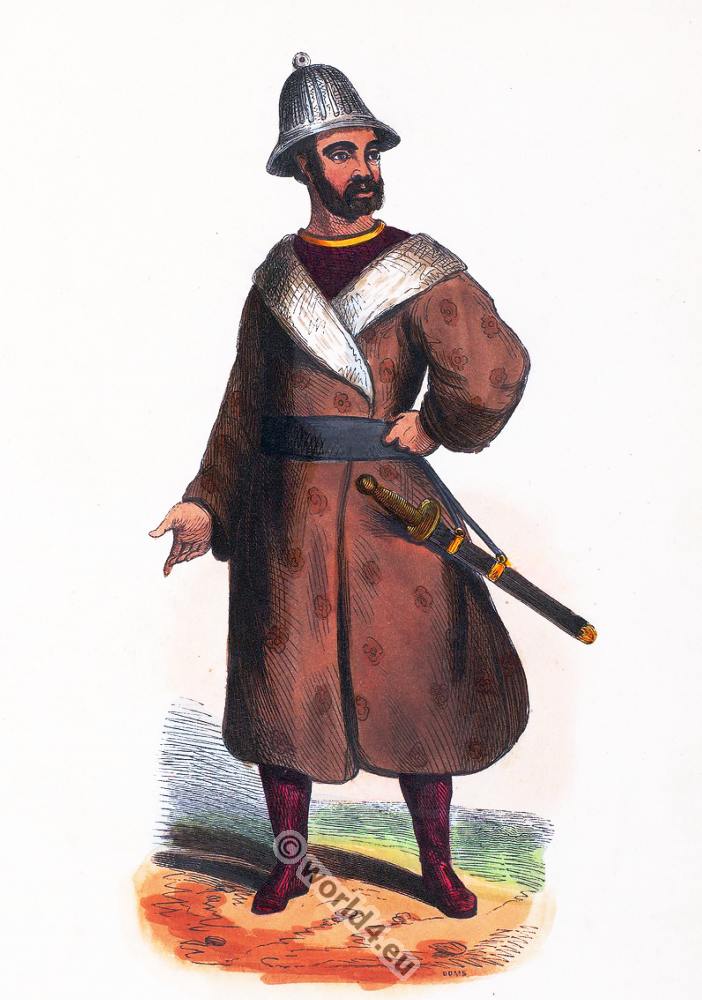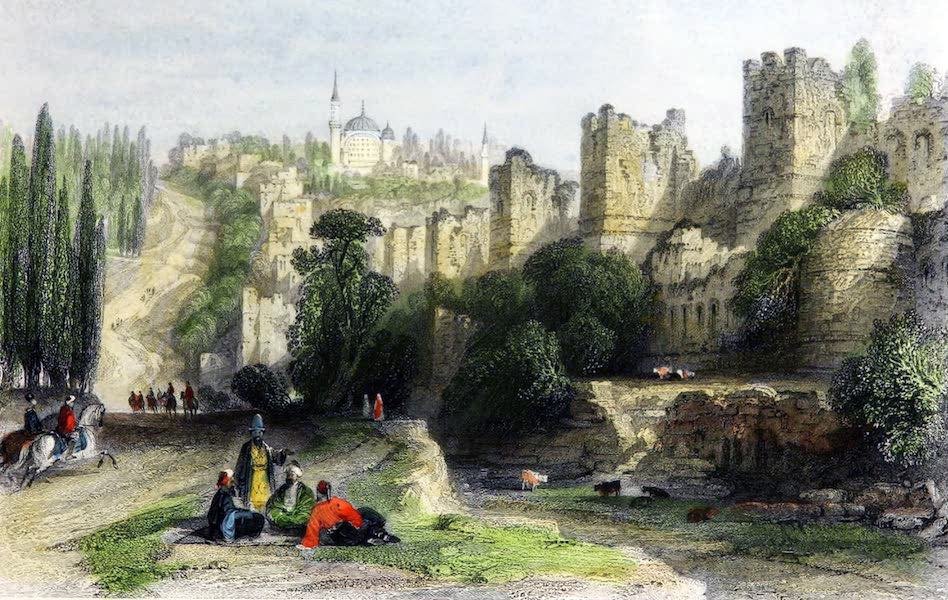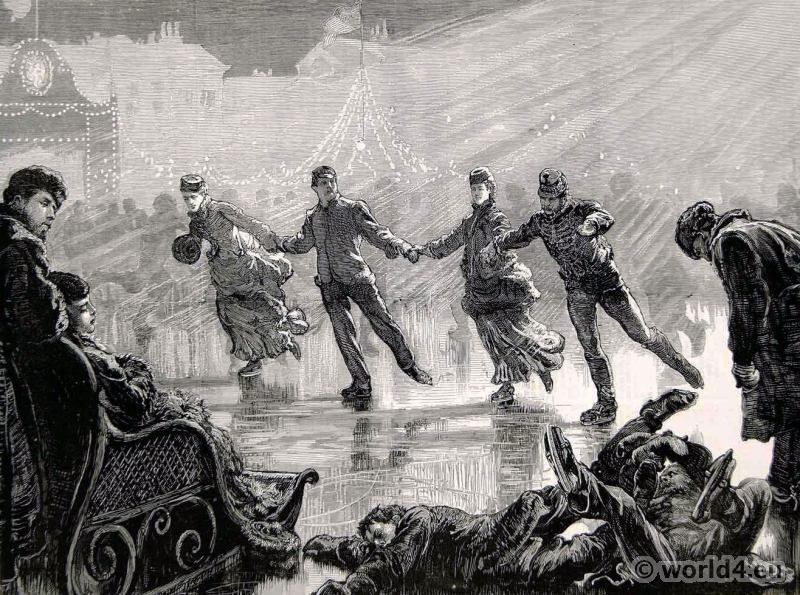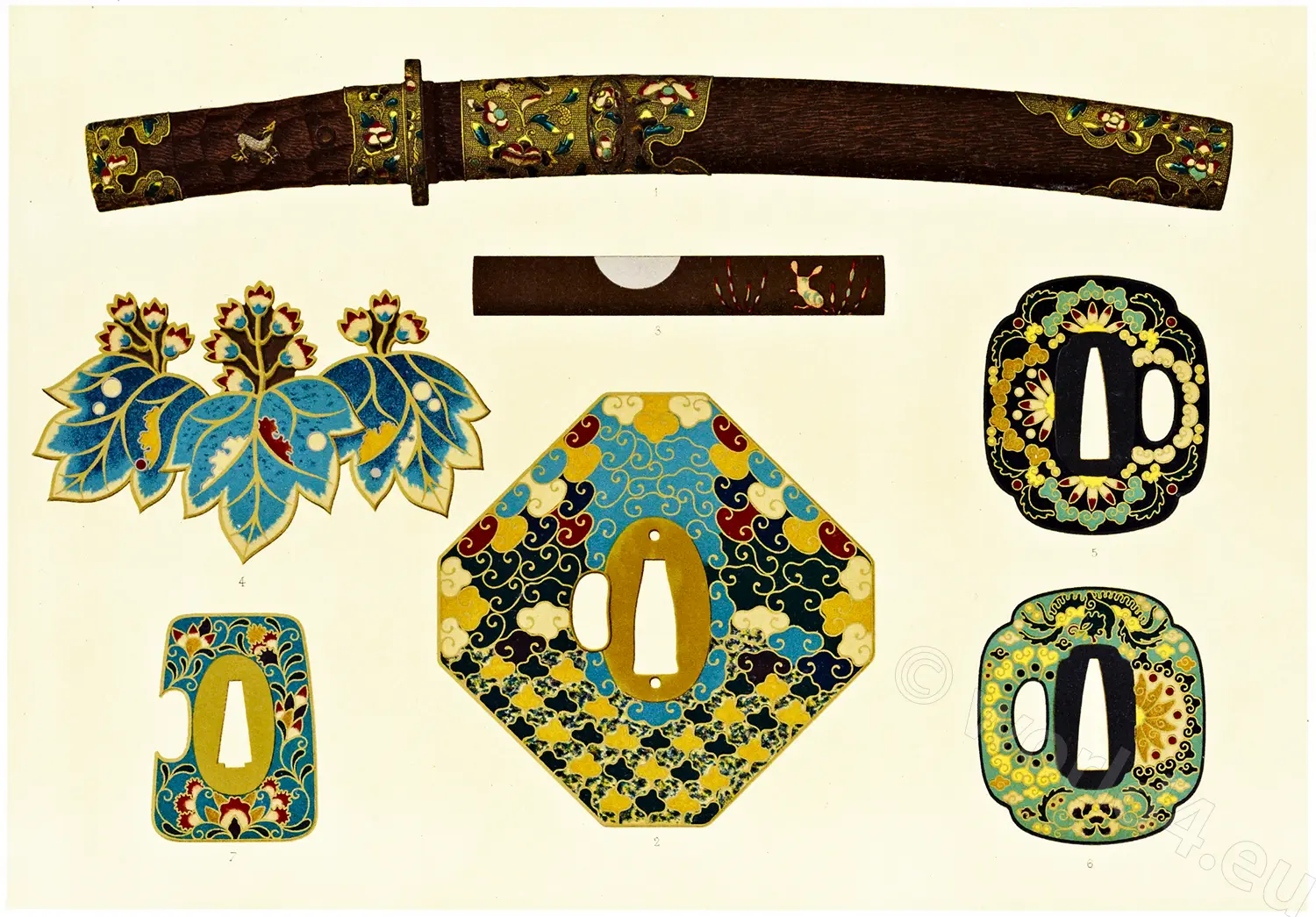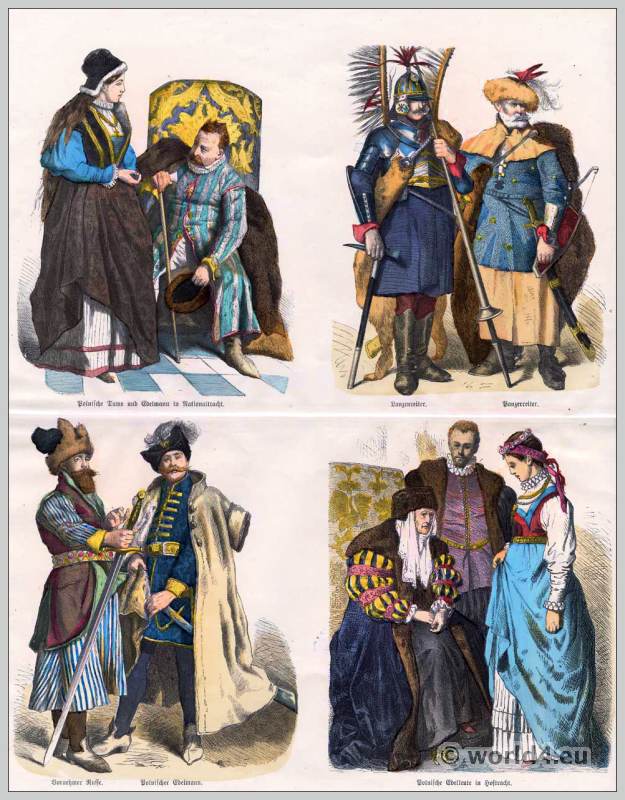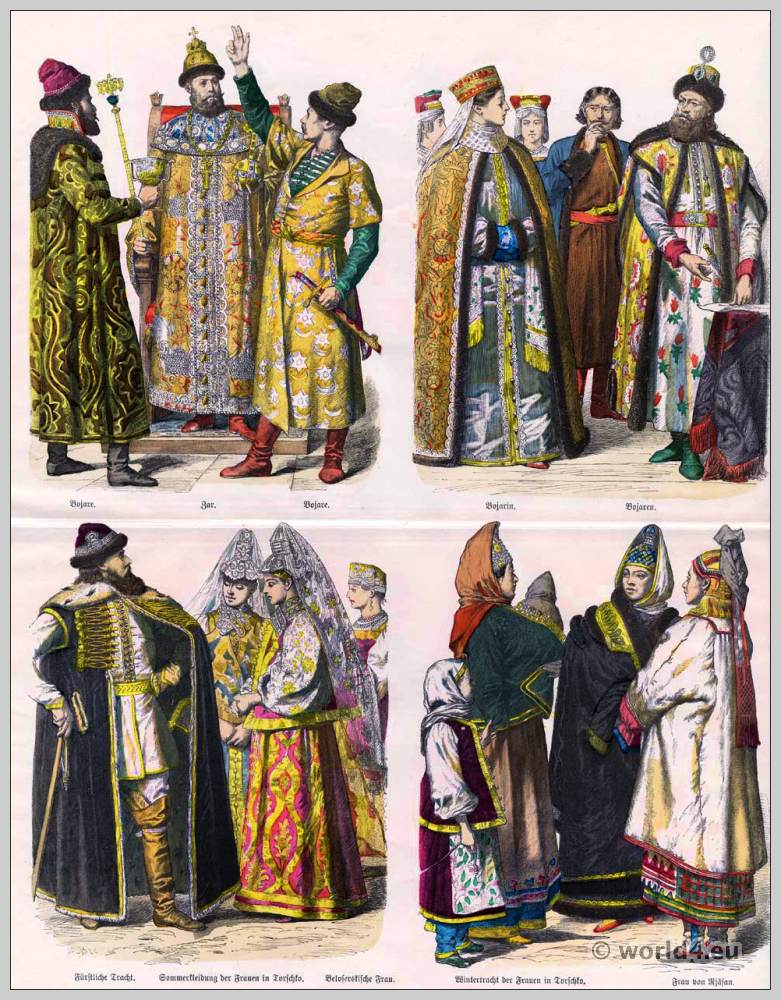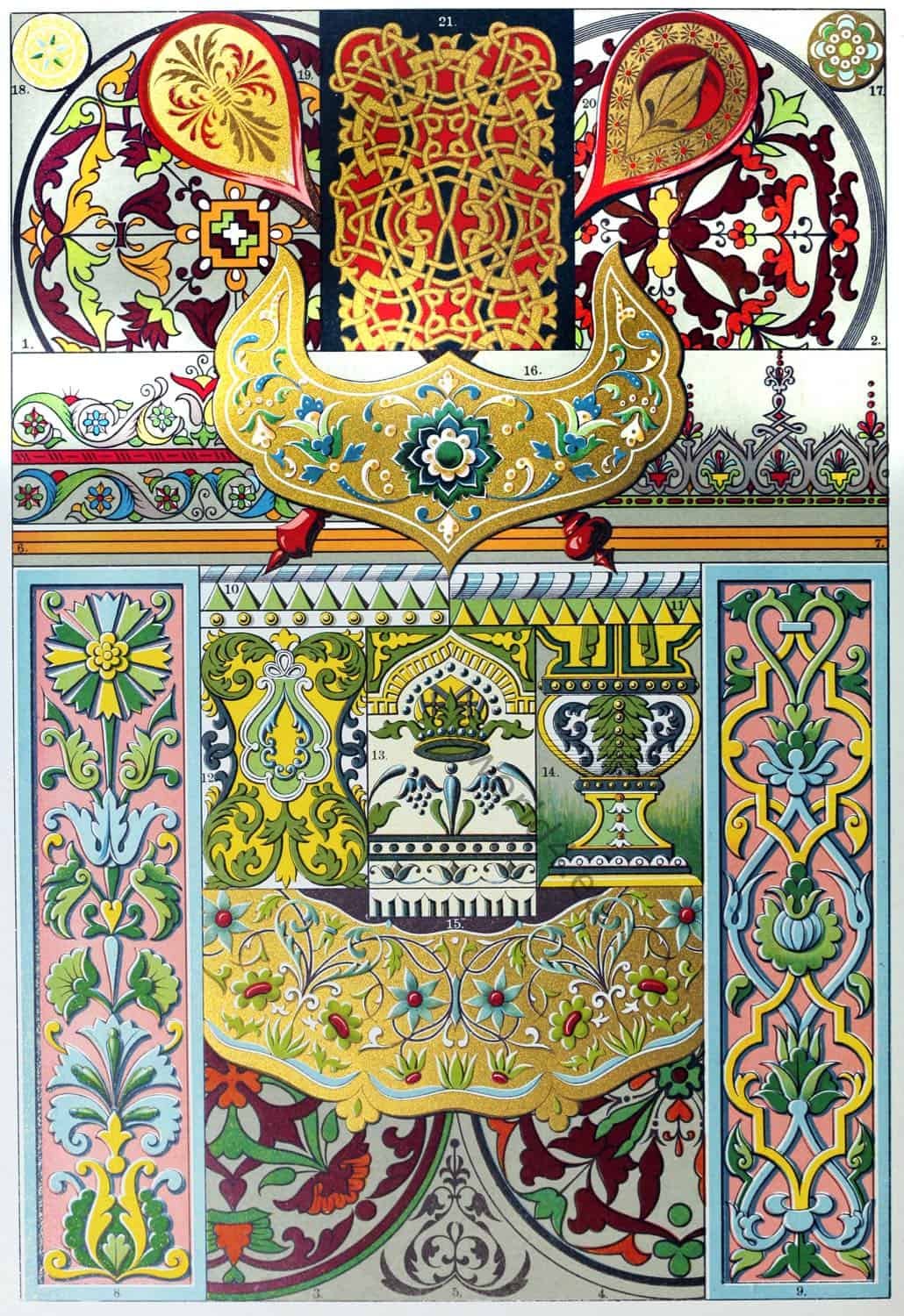
Russian.
Enamel, Majolica, Paintings on Walls and Ceilings. Japanned Woodwork.
Plate 37.
In Russia we find enamel ornaments on gold, silver and copper still as widely distributed and as highly esteemed as in former times when they first attained their reputation.
Figures 15 — 18 present some interesting examples of this kind. Figure 15 especially shows how extensive was the employment of this beautiful decoration, for here we see the edge of a gold dish belonging to a set for 120 persons which Czar Alexis Michaelowitsch (1645—1676) is said to have had manufactured by Russian artists.
In like manner majolica found an early and extensive employment in consequence of its being preferred and used for the ornamentation of the fronts of palaces and churches no less than of the interior of altars, but most particularly of stoves in private rooms. This we find confirmed in many towns along the river Volga, especially at Jaroslaw, where there is an abundance of examples. In recent times the use of majolica has been taken up again in many parts of Russia with highly satisfactory results.
Fig. 1 — 4. Wall-paintings on a spiral staircase in the Cathedral of the Annunciation at Moscow. XV Century.
Fig. 5 — 7. Ornaments on vaults in a house of Moscow. XVII Century.
Fig. 8 and 9. Majolica pilaster as window frame at the Terem (Palace of the Empresses) in the Kremlin, Moscow.
Fig. 10 — 14. Portions of encaustic stoves made in the market-town of Ustjug. XVII century, in the Museum of the Imperial Society for the promotion of Art in St. Petersburg.
Fig. 15. Edge of a gold dish in the treasury of the Kremlin, Moscow.
Fig. 16—18. Veil from the portrait of a saint of the XVII century. Enamel on silver. From the Museum of the Imperial Society for the promotion of Art, St. Petersburg.
Fig. 19—21. Japanned wooden spoons and top of a footstool. Articles made by peasants in the district of Novgorod.
Fig. 19—21 after copies made by M. Scherwinsky. Director of the Industrial School at Riga. The other subjects taken from: „N. Simakof: l’ornement russe dans les anciens produits de l’art industriel national.”
„Th. Sonzew: „Altertümer des russischen Kaiserreiches, Moskau 1849—1853.”
„Viollet-le-Duc: l’art russe.”
Source: Ornamental treasures: a collection of designs from India, China, Japan, Italy, Germany, France. etc., of all styles and times by H. Dolmetsch. New York: R. Davis 1912.
Related
Discover more from World4 Costume Culture History
Subscribe to get the latest posts sent to your email.

